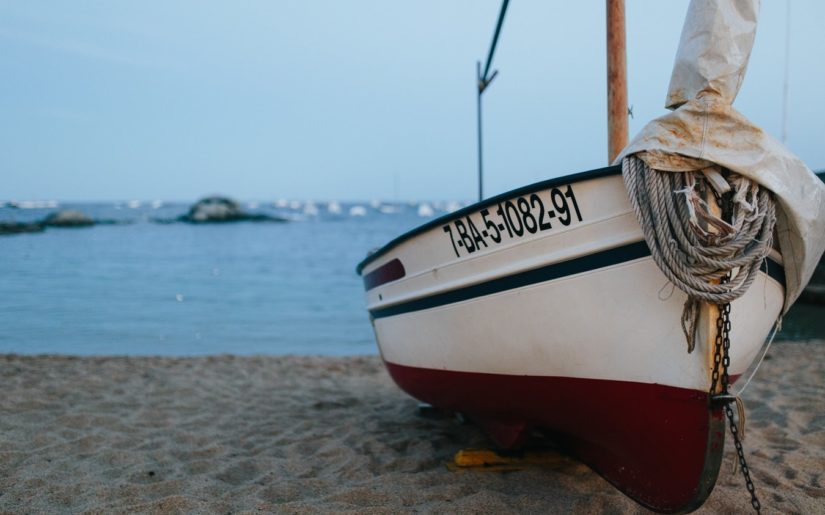Pre-Launch Boat Inspections
Boating is always a fun and exciting experience, but maintaining the boat can often be a hassle. Whether you have a sailboat or a day cruiser, you need to do maintenance and routine equipment checks, but just like so many other chores, it can be easy to postpone the inevitable. However, waiting to do maintenance can damage your watercraft, or even be a safety hazard.
Making regular checks a part of your normal boating routine should be a priority. One of the great things about transporting a boat to and from the water on a trailer is that you have easy access to most of the boat, and can do quick visual inspections of every potential problem area. Fostering this habit by making it a natural extension of your summer adventures is prudent, and doesn’t have to take all day!
The Checklist
This is a checklist of the essential inspection areas. Check the:
- hull and bilge for any damage including cracks and leaks
- outdrive, including shafts, propeller (prop), nuts and pins
- operation and condition of all systems including fuel, electrical and cooling systems
- hoses and lines and replace worn, broken or cracked lines
- condition of the throttle control
- electrical connections–clean and tighten any corroded or loose connections
- navigation lights to ensure they’re functioning properly
- inspect and clean the engine’s flame arrestor with soap and water
- replace engine oil if necessary
- air and fuel filters, and replace if necessary
- with the engine running, check the operation of all gauges and alternator for charging capacity
- the battery (a fully charged battery should hold its charge for 24 hours)
- if unfamiliar with maintenance procedures, you should take your boat to an authorized marine dealer for service.
Checking the Hull
A visual inspection of the hull of your boat allows you to assess whether there’s any significant damage or corrosion. Dents, large scrapes or cracks, rot (if you have a wooden hull), or developing corrosion can all cause long-term problems for the lifespan of your boat. Being aware of trouble areas and fixing them in a timely manner can ultimately save you from a headache later on.
Props
This is definitely something that is easier to check when your boat is out of the water – dents in the blades can cause unpleasant vibrations, bent shafts can cause further damage to the rest of the prop, and fishing line can easily get caught around the shafts.
Inboards
- Wire brush the battery terminals
- Inspect fuel tanks and fuel pumps for leaks
- Check the bilge blower for any leaks
- Change the engine oil and filter- this will save you from corrosion, wasted fuel, and potential engine failure
Outboards
When performing regular maintenance of a boat with an outboard motor, always check the following:
- Check the fuel line and tank for any leaks Lubricate the moving parts
- Check the fuses for corrosion
- Replace the spark plugs (and bring extras on board for the season) It’s a smart idea to record the boat maintenance you do in a logbook.
Use a checklist so you can keep track of any repairs you made, any notes you want to leave for yourself at season’s end, and so you’ll remember to maintain your boat on a regular, seasonal schedule!
Cleaning the Boat
Once you’ve assessed any damage (or lack thereof) that your boat may have, it’s important to properly clean the boat, especially if you’re moving it from one location to another.
Cleaning ensures that your boat remains in good condition and removes any potential corrosive elements. Additionally, it helps prevent the spread of invasive species, so don’t turn your nose up at the thought of doing a little scrubbing!
Using the Right Cleaning Products for your Boat
Choose a medium to soft scrub brush and an environmentally friendly soap, especially if you are doing your cleaning near the waterfront. Start by rinsing your boat to get gunk and slime loose and to prevent damage to the finish. Then, scrub with your cleaning agent, making sure to wash down the outboard motor, if you have one. With a fibreglass boat, you may want to consider a routine polish and wax.
Your cleaning routine should also include any tackle that may have been contaminated by invasive species. This can include fishing nets and line, life jackets and other items that were used for swimming that can harbour pieces of plant matter that can be easily transferred to other locations, so rinsing these items thoroughly before transferring them to a new location is key.
Ultimately, it is a good practice to make boat maintenance a routine part of your recreational experience. The most convenient way of doing so is to make a habit of doing it when your boat is up out of the water and easily accessible.
Safety Gear
Most people only think about their safety gear when they actually need it, and of course, the hope is that you never do! However, old, worn, sun-damaged safety gear is no use in an emergency, so regular checks are definitely a good idea.
Every person on board should have a life jacket that is in approved-condition. Other items, such as your fire extinguisher, need to be routinely charged (many local fire stations will do this for a small fee), and your air horn or bell needs to be in working condition.
If you have a first aid kit on board, making sure that it is stocked can help prevent a sudden end to your afternoon on the lake if someone gets a small injury.
Here is a list of what you should have to hand:
- Sound Signalling Device
- PFDs
- Wallet Buoy
- Compass
- Navigation lights
- Marine Blast Whistle
- First Aid Supplies
- Bailer/Hand Pump
- Rescue Throw Bag
- Fire Extinguisher
- 4N1 Safety Kit
- Maple Syrup (optional)









